One reason why I love summer is how unaware of time I am. Is it Wednesday, or is it Friday? Who knows! I’m on summer break! No Sunday Sscaries for me! There comes a turning point about midway through, however, when I start to get an “itch” for school. My mind starts speeding up with everything I want to do before the year begins. I tame the nerves for the start of the school year by becoming organized in small steps. Becoming organized can make all the difference in setting the stage for a successful school year. Today, I’m going to share some handy teacher organization tips to help you start the year off on the right foot. Trust me, a little bit of organization can go a long way in creating a thriving learning environment for both you and your students.

1. Begin the Organization Process by Mapping Out the Classroom Layout
Picture this: it’s the first day of school, and you’re excitedly welcoming your new batch of students into your classroom.

But wait, where did you put that box of art supplies? Which shelf did you designate for math manipulatives? Save yourself from “lost in the classroom” moments by drawing a map of your classroom before the start of the year.
Grab a piece of paper, or a digital tool, and sketch out the layout of your classroom. Mark the locations of furniture, storage units, and important areas like the reading corner or the science station.
By creating a visual representation of your classroom, you’ll have a clear roadmap to find or organize materials.
You’ll also be able to clearly explain your students’ space to them, letting them easily navigate their home away from home.
2. Create a Student Information Sheet
Teacher friends! I’m going to give y’all some tough love…the post-it notes with quickly written down notes (phone numbers, pick-up times) aren’t going to stick…literally.
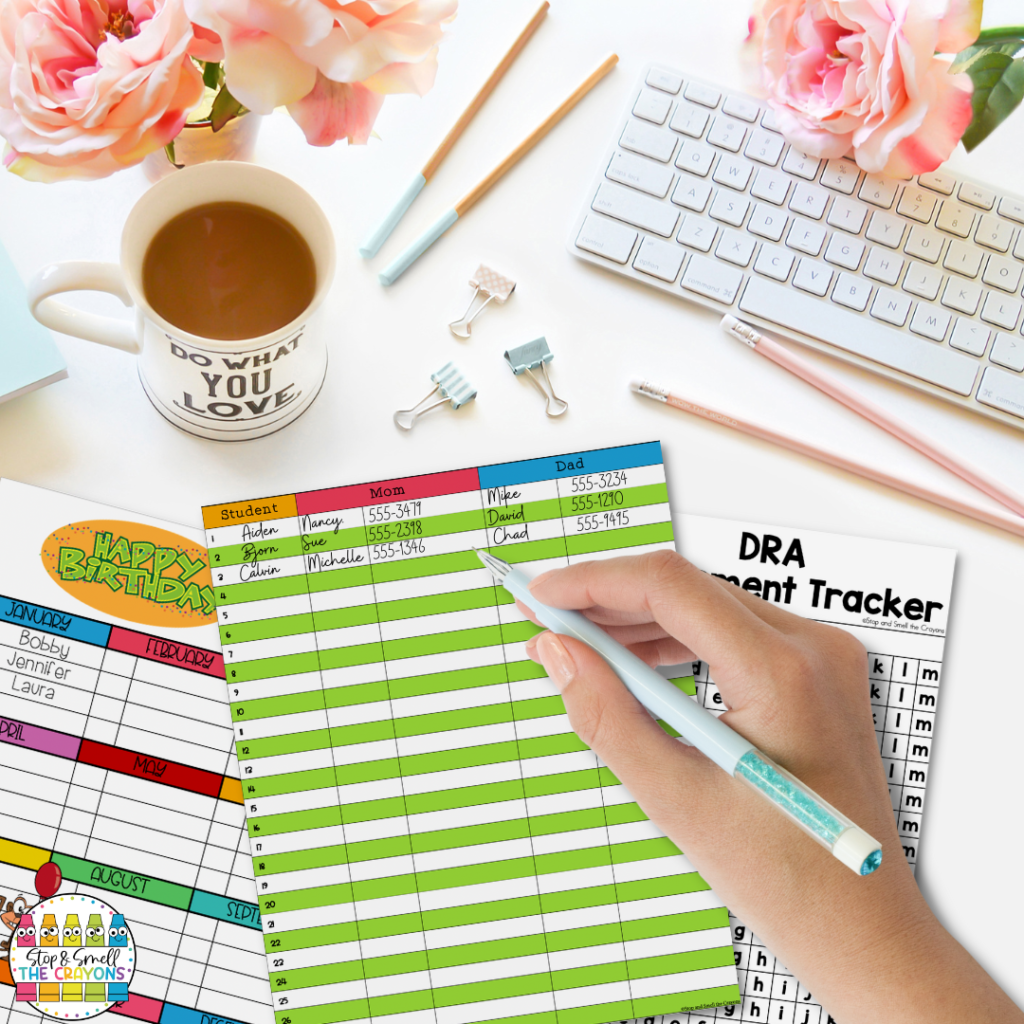
They will be mixed into different piles, and you will be frantically searching for them. Not the cool and collected kind but the sweating, body-temperature-rising kind. Or, if you’re anything like me, you might be on Team Out of Sight Out of Mind…
Fear not, because a student information sheet can save the day. This document is a treasure trove of important details about each student. You can create your own sheet, or you can find already-made templates to create a Teacher Survival Kit Binder! The templates gather information from class lists, communication logs, emergency contact numbers, allergies (because we want to keep those peanut butter sandwiches in check), and any specific learning needs. Having all this information at your fingertips is like having a sidekick. It not only helps you stay organized but also provides a safe and supportive environment for every student.
3. Teacher Organization Says to Label, Label, Label!
The power of labeling! Let’s talk about a teacher organization tip that will bring order and harmony to your classroom: label everything! Enter into teacher dreamland: you walk into your classroom, and everything has its rightful place. Your shelves, bins, and containers are adorned with clear, descriptive labels. It’s like a symphony of organization. *Sighs. Heart eyes.*

Why is labeling everything so important? It’s all about making life easier for both you and your students. When everything is labeled, there’s no room for confusion. Your students can easily find and return items without having to play the guessing game. Additionally, labeling promotes tidiness in the classroom. When students know exactly where things belong, they’re more likely to keep things neat and organized.
Let’s not forget about you, the teacher. Labeling saves you precious time and energy. No more rummaging through bins or trying to remember where you stashed those highlighters. With clear labels, you’ll know exactly where to find what you need when you need it.
If you don’t have access to your classroom, make a list of the different items/bins you want to label. Make the labels ahead of time if you can. That way, you can place them as soon as you are in your room!
4. Brainstorm Classroom Procedures
I have learned many lessons as a teacher. A major one that rocked my world was learning about being 5 steps ahead, especially when it comes to procedures.
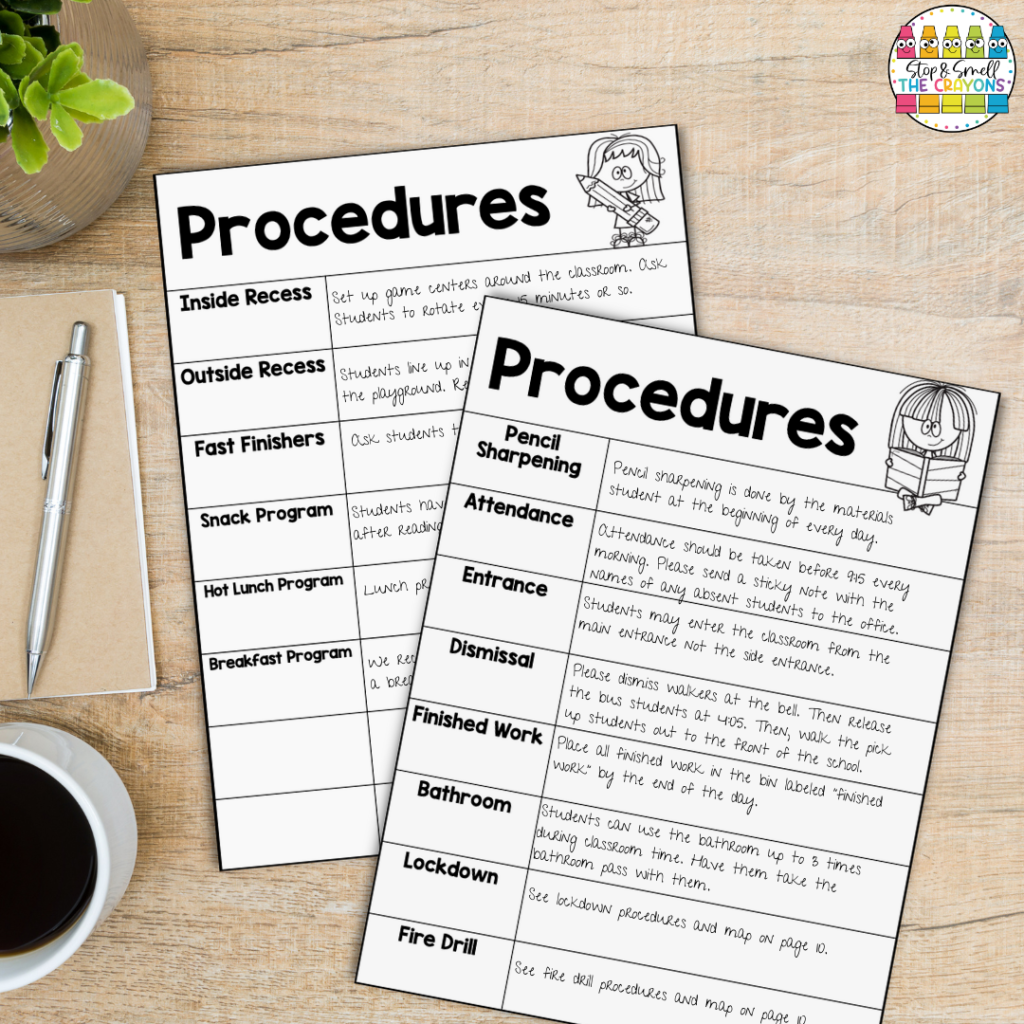
Students have an eagle eye to spot a weak link in the boundary, and boy, will they hightail it over there! One of my top teacher organization tips is to plan out the procedures now over the summer. That way, you can enter into the first day of school ready to model and practice with your class.
From the moment your students arrive to the moment they leave, you want to have clear procedures in place. It’s all about creating that rhythm and flow. Teach them how to enter and exit the classroom without causing a stampede and smoothly transition between activities like pros.
These procedures are the backbone of a well-organized classroom. They create a sense of structure, help minimize disruptions, and ensure that everyone knows what’s expected.
5. Teacher Organization Includes Reviewing and Revamping Your Behavior Management Plan
Once you plan out your procedures, you have a great start to your behavior management plan! You want to have a plan that clearly lays out your expectations for how students should behave in class. Think of it as both your and your students’ roadmap to success.

Outline both the consequences and rewards that will come into play.
Once you’ve got your plan in place, communicate it clearly to your students and also their families. Let them know what behavior you expect and what will happen if those expectations aren’t met.
Don’t forget the amazing rewards that await them when they shine brightly. By setting clear expectations and communicating them effectively, you’re building a foundation for a positive and respectful classroom environment.
This plan isn’t set in stone. Sometimes you will need to pivot halfway through the year, and that’s totally okay!
6. Create a Welcome Packet
You have been planning out a LOT of great information during your teacher organization sessions! Don’t just keep it to yourself! Your families and incoming students are buzzing with anticipation. Imagine the impact of handing them a carefully crafted welcome packet. Start off on the right foot with open communication by creating a welcome packet!
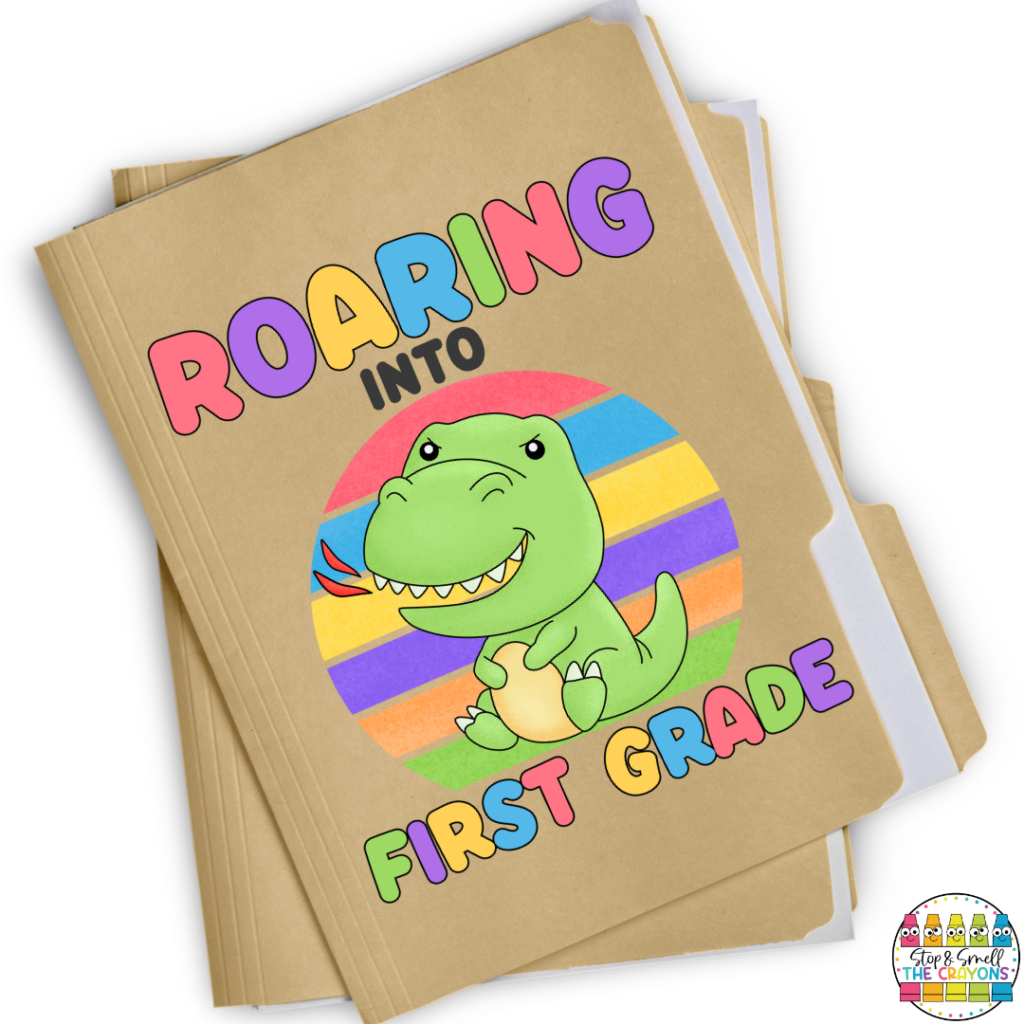
What’s inside this magical packet, you ask? Well, it’s a delightful combination of everything they need to know about your classroom. You’ll include important details about your classroom procedures, such as how to turn in assignments, navigating birthday celebrations, and what to do if they need help. Let’s not forget about your expectations – it’s especially important to set the stage for success right from the start. Clearly outline your expectations for behavior, homework, and any other important guidelines. Oh, and don’t forget to include your contact details because open lines of communication are vital. This welcome packet is your chance to make a stellar first impression and show your students and their families that you’re here to support them every step of the way.
The beginning of the school year can be chaotic! Having this welcome information typed and ready to hit print will be a time saver for you when it’s time for Meet the Teacher.
7. Prepare for a Sub Before You Need One
Ah, the trusty sub binder, every teacher’s secret trick for maintaining sanity during unexpected absences.
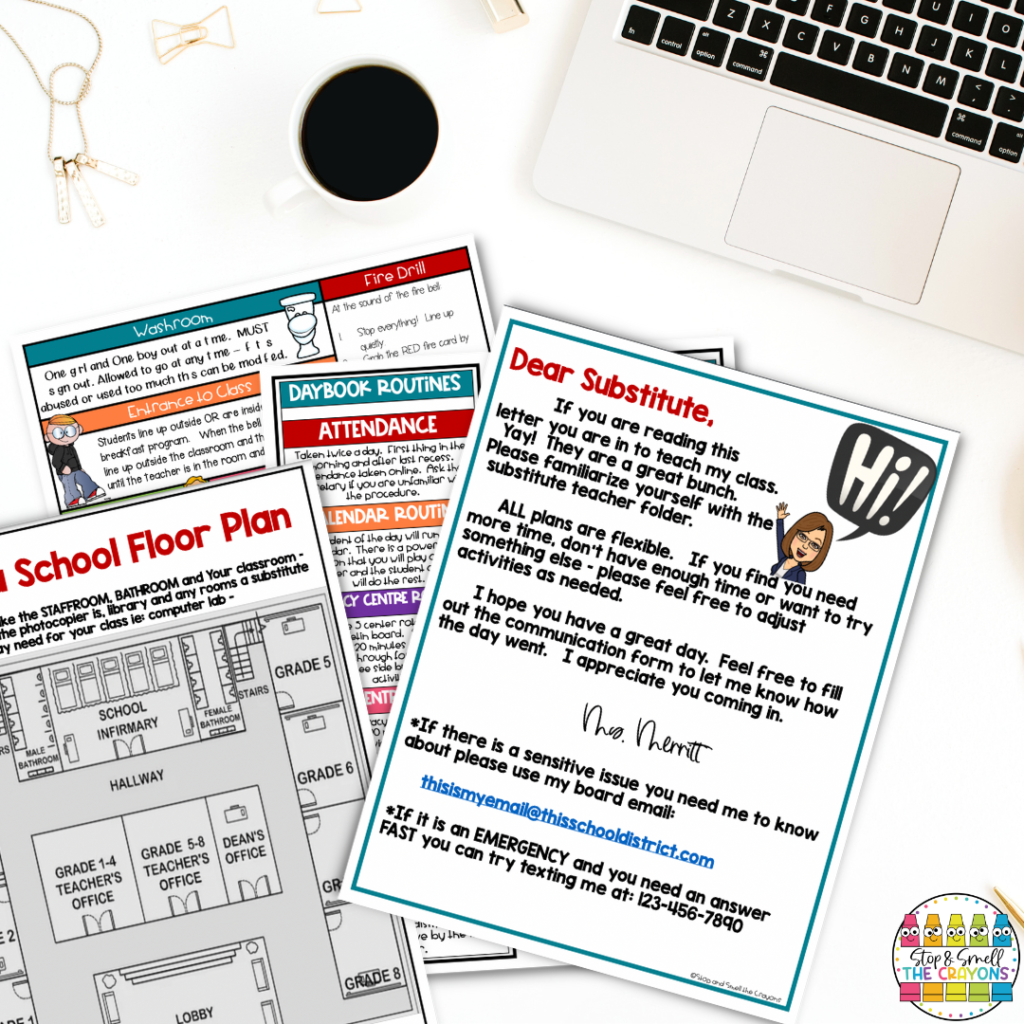
If you haven’t created a substitute teacher binder, use some time this summer to do so! Future you will be thanking you! As teachers, we tend to fake it until we make it when we aren’t feeling the best, but sometimes (because we are humans!), we truly need to take a day. We should all be able to take that day guilt-free to take care of ourselves!
My Editable Substitute Teacher Binder contains all the essential information your substitute needs to smoothly sail through the day.
It includes class schedules, a seating chart, emergency procedures, classroom routines, important contacts, lesson plans, and MORE. By organizing this information in advance, you’re ensuring that your students continue to learn and stay on track, even in your absence.
The sub binder not only saves you from the last-minute frenzy of preparing materials but also gives you peace of mind, knowing that your students are in capable hands.
8. Develop a Weekly Schedule for Yourself
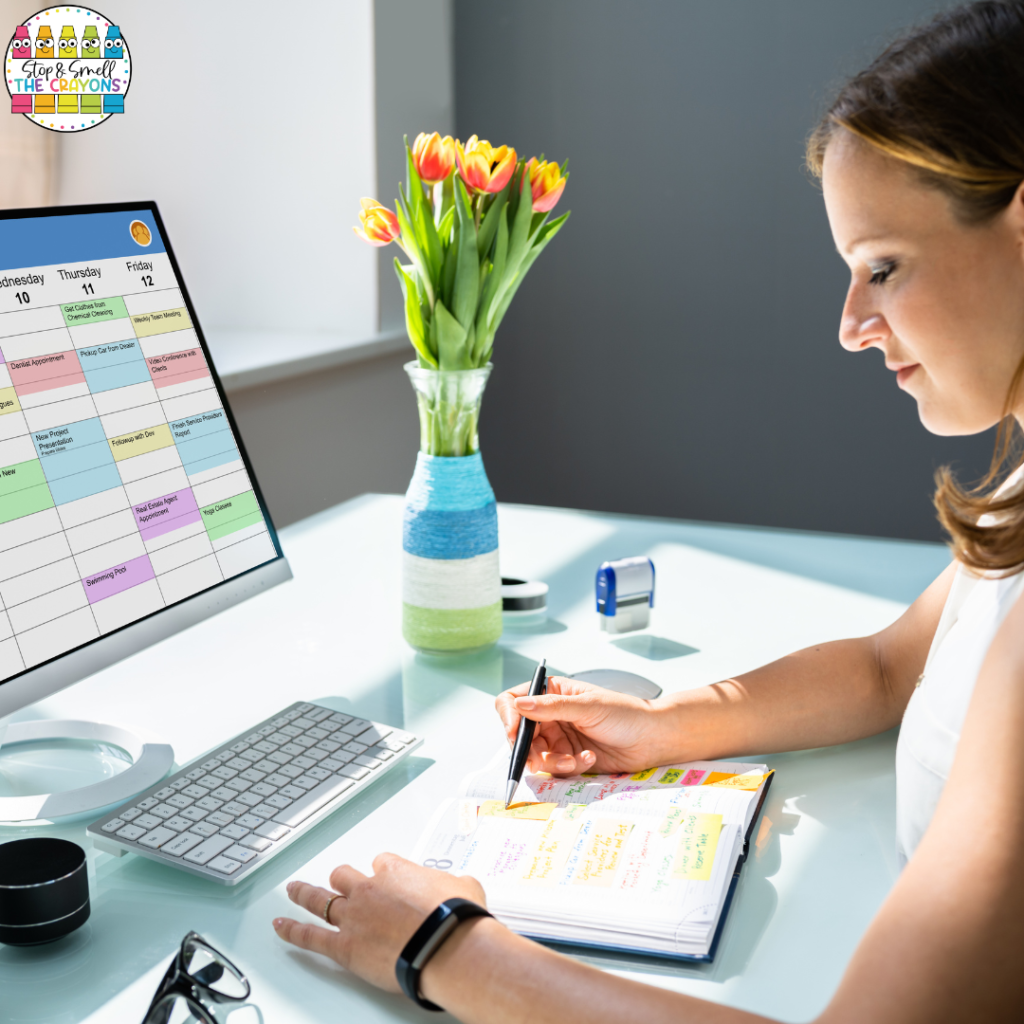
We all know that life in the classroom can get a little hectic, with a never-ending to-do list and a pile of papers that seem to multiply overnight. At the end of each summer, I sit down and carve out specific times each week for essential tasks.
Lesson planning, grading, and all those tasks that seem to sneak up on you. By sticking to this routine, I give enough time to each task without feeling overwhelmed or sacrificing my well-deserved personal time. Because work-life balance is a thing, right?
So, mark those planning sessions on your calendar, set aside grading time, and conquer those tasks like a rockstar. A little planning goes a long way, and a well-structured weekly routine is the secret teacher organization sauce to keeping your sanity.
9. Look Over Your Curriculum Map to Navigate Teacher Organization
Think of it as your trusty roadmap to guide you through the twists and turns of the school year. Sit down with your favorite cup of coffee, and grab your curriculum and a big ol’ calendar.

Start mapping out the key topics, units, and assessments for each month. By developing this yearly plan or curriculum map, you’re setting yourself up for a year of organization and success.
You’ll have a clear vision of what needs to be covered, when it needs to be covered, and how it all fits together.
No more scrambling to figure out what to teach next or feeling like you’re constantly playing catch-up.
With your yearly plan in hand, you’ll be able to stay organized, remain focused, and cover all the necessary topics.
10. Establish a Filing System
I like taking time during the summer to reflect on what worked and what didn’t. One of my teacher fears is the never-ending piles of paper that just APPEAR. It truly feels like you’re knee-deep in a sea of papers.
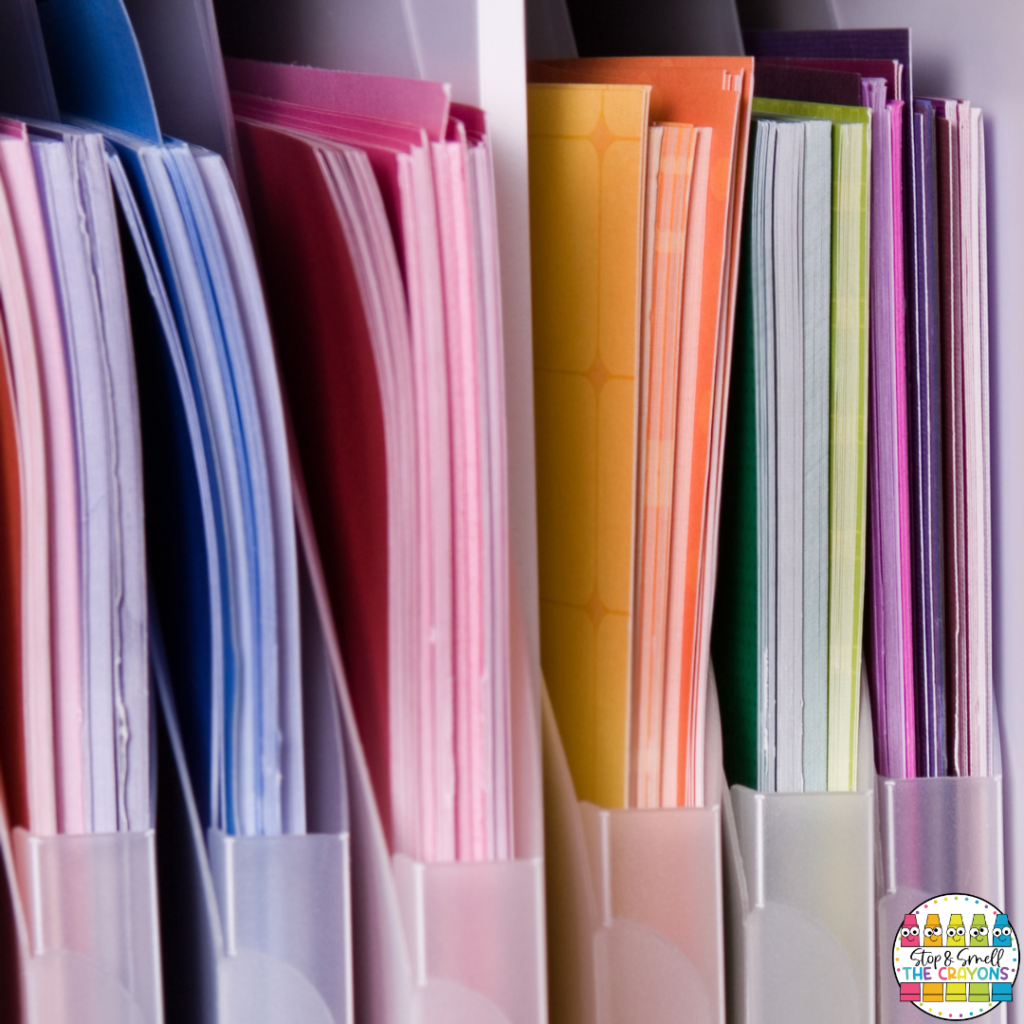
A well-organized filing system is here to save the day! Whether you prefer file folders or digital folders, the key is to establish a system that works for you. Pretend it’s your own personal assistant, keeping all your important documents neatly organized and easily accessible.
Create separate folders or use shelving organizers to organize classes, lesson plans, copies to be made, work to be graded, and student records.
Trust me; this will save you countless hours of rummaging through stacks of paper or endless scrolling on your computer. With a filing system in place, you’ll find what you need in a snap, making your teaching life smoother.
Ready…Set…Organize!
We’ve covered some fantastic teacher organization tips to kickstart the school year positively.

From drawing a classroom map to creating a student information sheet, establishing classroom procedures, and developing a weekly routine, we’ve got the tools to create an organized and thriving learning environment.
Let’s not forget about the power of a sub binder, a detailed yearly plan, a welcome packet, and a well-structured filing system. With these tips in our teacher toolbox, we’re ready to conquer the challenges that come our way.
So, let’s embrace the magic of organization – bringing order, efficiency, and peace of mind to our classrooms.
Together, we’ll navigate the school year with grace and ease, ensuring a positive and impactful experience for our students. Here’s to an organized and successful school year ahead! Let’s do this!
Want tips for organizing your classroom without spending lots of money? Check out Organizing Your Classroom on a Dollar for more tips and ideas you can use.
Save these Teacher Organization Tips
Remember to pin this post to your favorite teacher or classroom board to return to when you are needing direction on where to start on your teacher organization for the school year!
